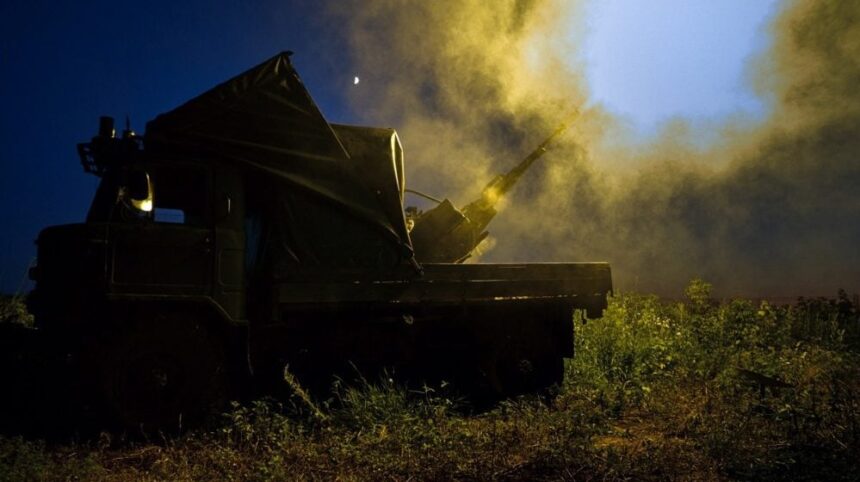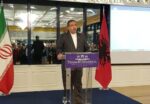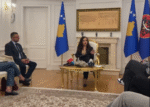U.S. President Donald Trump’s ultimatum to Russia, demanding a peace agreement regarding Ukraine within 50 days or face severe energy export sanctions, provides the Kremlin with additional time to continue its summer offensive, according to the Associated Press.
However, determined Ukrainian resistance makes rapid Russian military gains unlikely. President Vladimir Putin has repeatedly stated that any peace agreement would necessitate Ukraine’s withdrawal from four regions illegally annexed by Russia in September 2022, none of which have been fully occupied. Putin also demands that Ukraine abandon its pursuit of NATO membership and accept strict limitations on its armed forces—demands unequivocally rejected by Kyiv and its Western allies.
Chronic shortages of personnel and ammunition have forced Ukrainian forces to prioritize defense over launching counteroffensives. Yet, despite renewed Russian assaults and a recent wave of airstrikes on Kyiv and other cities, Ukrainian officials and analysts believe it remains improbable that Moscow can achieve any territorial breakthrough significant enough within 50 days to compel Ukraine to accept the Kremlin’s terms in the foreseeable future.
Russia’s Primary Objectives
Since spring, Russian troops have accelerated territorial gains on the ground, seizing more territory in eastern Ukraine than at any time since the initial phases of Moscow’s full-scale invasion in 2022.
Russian forces are now approaching the eastern strongholds of Pokrovsk and Kostiantynivka in the Donetsk region, methodically capturing surrounding villages to try and cut off key supply routes and encircle their defenders—a slow offensive that has been ongoing for months. Capturing these strongholds would allow Russia to push towards Sloviansk and Kramatorsk, setting the stage for seizing the entire Donetsk region. If Russian troops seize these last strongholds, it would open their path to continue westward, towards the Dnipropetrovsk region. The regional center of Dnipro, a major industrial hub with nearly a million inhabitants, lies about 150 kilometers west of current Russian positions. Expanding combat into the Dnipropetrovsk region could severely impact Ukrainian morale and provide the Kremlin with additional leverage in any negotiations.
In the neighboring Luhansk region, Ukrainian forces control a small portion of territory, but Moscow has not appeared to prioritize its full capture. Two other regions annexed by Moscow—Kherson and Zaporizhzhia—appear far from being fully occupied by Russia. Russia rapidly seized the Kherson region, but Ukrainian forces managed to reclaim large parts of it in November 2022, forcing the Russians to withdraw to the eastern bank of the Dnieper River. A new attempt to cross this waterway to capture the rest of the region would pose immense challenges, and Moscow currently does not appear to have the capacity for such an operation. Full occupation of the Zaporizhzhia region also seems to be a significant challenge.
Russia’s “Buffer Zone” Attempts and Exhaustion Strategy
Moscow’s forces have captured several villages in Ukraine’s northeastern Sumy region after regaining parts of Russia’s Kursk region from Ukrainian troops who conducted a surprise incursion in August 2024. Ukraine claims its forces have halted the Russian offensive and maintain a presence on the edge of the Kursk region, where they continue to tie down up to 10,000 Russian troops.
Putin recently described the offensive in the Sumy region as part of efforts to create a “protective zone” to shield Russian territory from Ukrainian attacks. The regional center of Sumy, a city of 268,000 inhabitants, is about 30 kilometers from the border. Putin stated that Moscow currently does not plan to capture the city but does not rule it out. However, military analysts believe that Russian forces in the area clearly lack the strength to capture it. Russian forces have also launched an offensive in the neighboring Kharkiv region but have not made significant advances due to fierce Ukrainian resistance.
Some commentators suggest that Russia might be banking on using gains in the Sumy and Kharkiv areas as “negotiating chips,” exchanging them for Ukrainian-controlled parts of the Donetsk region. “The scenario of territorial exchanges within negotiations is quite realistic,” said Mikhail Karyagin, a political expert close to the Kremlin, in an analysis.
Ukrainian commanders state that the scale and pace of Russian operations indicate that any decisive breakthroughs are out of reach, as Russian troops advance slowly at enormous cost to their own forces. While exhausted Ukrainian forces feel outmatched and outgunned, they rely on drones to halt Moscow’s slow progress. Significant troop and weapon movements are easily detected by drones, which are so numerous that both sides use these aircraft to track and attack even individual soldiers within minutes. Russian military commentators acknowledge that Ukrainian drone proficiency makes any rapid Russian advances unlikely.
They say Russia aims to exhaust Ukraine with a strategy of “a thousand cuts,” using relentless pressure on multiple sectors of the front and gradually intensifying long-range aerial attacks on key infrastructure. “The Russian army aims to exhaust the enemy so much that he will not be able to maintain defense, and multiple breakthroughs will grow into one or more successes at the strategic level that will determine the outcome of the war,” wrote Moscow military analyst Sergei Poletayev in an analysis. “It is not so important where and at what speed the advance is made: the goal is not to capture this or that line. The goal is the enemy army as such.”
Western Deliveries Crucial for Ukraine
Ukrainian troops on the front lines express dissatisfaction and anger over delays and uncertainties regarding U.S. weapon deliveries. Delays in American military aid have forced Ukrainian forces to ration ammunition and reduce operations while Russia intensifies attacks, Ukrainian soldiers from eastern Ukraine told AP.
The United States will sell weapons to its NATO allies in Europe, enabling them to forward them to Ukraine, according to statements by Trump and U.S. Secretary of State Marco Rubio. Among the deliveries are Patriot air defense systems, a priority for Ukraine.
Accelerated weapon deliveries from European allies are crucial for Ukraine to halt Russian attacks, analysts say. “The pace of Russian advancement is accelerating, and Russia’s summer offensive is likely to put Ukrainian armed forces under intense pressure,” according to Jack Watling of the Royal United Services Institute in London in his analysis. However, most of the capabilities Ukraine needs—from drones to artillery systems—can be provided by NATO allies in Europe, he added. “In the short term, Europe can cover most of Ukraine’s needs as long as it can buy some key types of weapons from the US,” Watling said.







